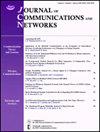Distributed IIoT anomaly detection scheme based on blockchain and federated learning
IF 3.2
3区 计算机科学
Q2 COMPUTER SCIENCE, INFORMATION SYSTEMS
引用次数: 0
Abstract
Anomaly detection in the industrial internet of things (IIoT) devices is significant due to its fundamental role in protecting modern critical infrastructure. In the IIoT, anomaly detection can be carried out by training machine learning models. Data sharing between factories can expand the data from which the model is trained, thus improving the performance of the model. However, due to the sensitivity and privacy of IIoT data, it is also difficult to build a high-performance anomaly detection model between factories. To address this problem, we design an anomaly detection method for IIoT devices combined blockchain of main-side structure and federated learning. We store the global model on the main-chain while the side-chain records the hash value of the global models and local models, which updated by participating nodes, controlling nodes access to the global model through the main-side blockchain and the smart contracts. Only the nodes participating in the current federated learning training can get the latest global model, so as to encourage the nodes to take part in the training of the global model. We designed a proof of accuracy consensus algorithm, and select the nodes to participate in training according to the accuracy of the local model on the test dataset to resist the poisoning attack of the models. We also use the local differential privacy (LDP) algorithm to protect user data privacy from model inference attacks by adding noise to the local model. Finally, we propose a new algorithm named Fed_Acc to keep the accuracy of the global model stable when the users add a lot of noise to their local models.基于区块链和联合学习的分布式物联网异常检测方案
工业物联网(IIoT)设备中的异常检测在保护现代关键基础设施方面发挥着重要作用。在 IIoT 中,异常检测可以通过训练机器学习模型来实现。工厂之间的数据共享可以扩大训练模型的数据量,从而提高模型的性能。然而,由于物联网数据的敏感性和隐私性,在工厂之间建立高性能的异常检测模型也很困难。为了解决这个问题,我们设计了一种将主侧结构区块链和联合学习相结合的 IIoT 设备异常检测方法。我们将全局模型存储在主链上,侧链则记录全局模型和本地模型的哈希值,并由参与节点更新,通过主侧区块链和智能合约控制节点对全局模型的访问。只有参与当前联合学习训练的节点才能获得最新的全局模型,从而鼓励节点参与全局模型的训练。我们设计了一种精度证明共识算法,根据本地模型在测试数据集上的精度来选择参与训练的节点,以抵御模型的中毒攻击。我们还使用了局部差分隐私(LDP)算法,通过在局部模型中添加噪声来保护用户数据隐私免受模型推理攻击。最后,我们提出了一种名为 Fed_Acc 的新算法,以在用户向本地模型添加大量噪声时保持全局模型的准确性稳定。
本文章由计算机程序翻译,如有差异,请以英文原文为准。
求助全文
约1分钟内获得全文
求助全文
来源期刊
CiteScore
6.60
自引率
5.60%
发文量
66
审稿时长
14.4 months
期刊介绍:
The JOURNAL OF COMMUNICATIONS AND NETWORKS is published six times per year, and is committed to publishing high-quality papers that advance the state-of-the-art and practical applications of communications and information networks. Theoretical research contributions presenting new techniques, concepts, or analyses, applied contributions reporting on experiences and experiments, and tutorial expositions of permanent reference value are welcome. The subjects covered by this journal include all topics in communication theory and techniques, communication systems, and information networks. COMMUNICATION THEORY AND SYSTEMS WIRELESS COMMUNICATIONS NETWORKS AND SERVICES.

 求助内容:
求助内容: 应助结果提醒方式:
应助结果提醒方式:


